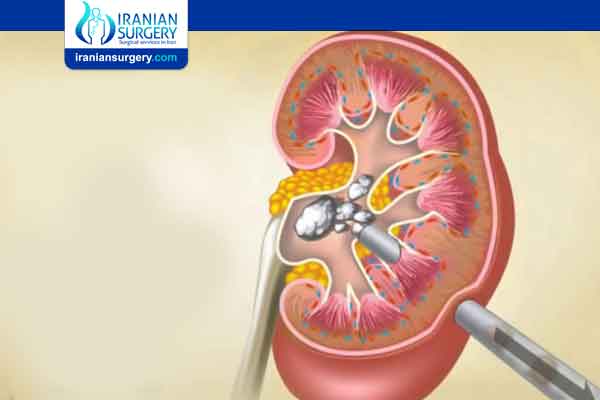Percutaneous Nephrolithotomy surgery
Percutaneous Nephrolithotomy
What is a Percutaneous Nephrolithotomy?
Percutaneous nephrolithotomy is a procedure used to remove kidney stones from the body when they can't pass on their own. A scope is inserted through a small incision in your back to remove the kidney stones.
Percutaneous nephrolithotomy is used most often for larger stones or when other procedures, such as extracorporeal shock wave lithotripsy or uteroscopy, are unsuccessful or not possible.
About Iranian Surgery
Iranian surgery is an online medical tourism platform where you can find the best surgeons in Iran. The price of percutaneous nephrolithotomy procedure in Iran can vary according to each individual’s case and will be determined based on an in-person assessment with the doctor.
For more information about the cost of percutaneous nephrolithotomy procedure in Iran and to schedule an appointment in advance, you can contact Iranian Surgery consultants via WhatsApp number +98 901 929 0946. This service is completely free.
Before Percutaneous Nephrolithotomy
Why it's done
Percutaneous nephrolithotomy is typically recommended in the following situations:
. Large kidney stones are blocking more than one branch of the collecting system of the kidney (known as staghorn kidney stones)
. Kidney stones are larger than 0.8 inch (2 centimeters) in diameter
. Large stones are in the ureter
. Other therapies have failed
Before you undergo percutaneous nephrolithotomy, your doctor will perform several tests. Urine and blood tests check for signs of infection or other problems, and a computerized tomography (CT) scan determines where the stones are in your kidney.
Risks
The most common risks from percutaneous nephrolithotomy include the following:
. Bleeding
. Infection
. Injuries to the kidney or other organs
. Incomplete stone removal
How you prepare
Percutaneous nephrolithotomy is usually performed in the hospital under general anesthesia, meaning you will be asleep during the procedure and not feel any pain.
Your doctor may prescribe antibiotics to reduce your chance of developing an infection after the procedure.
What you can expect
Before the procedure
Before the procedure, your surgeon may have you go to the radiology department, where a radiologist will use CT, ultrasound or X-ray imaging to guide access to the kidney. This is done with a local anesthetic, meaning you will be awake but will not feel any pain. You will then be transferred to the operating room for the actual procedure.
Alternately, your surgeon may prefer to access the kidney in the operating room while you are under general anesthesia. In this case, the surgeon will put a tube through your bladder and up into your kidney, and will use X-ray imaging to make a puncture in your kidney so that the stones can be removed. If you have very large stones, the surgeon may need to make more than one puncture.
During Percutaneous Nephrolithotomy
During the procedure
When the doctor has access to the kidney stones, he or she will place a sheath into the kidney and break up the stones using a special instrument. When the fragments are small enough, the doctor will remove them. When the procedure is complete, the surgeon may leave drainage tubes in the kidney.
Your doctor may send the kidney stone fragments to be analyzed or to check for infection.
After Percutaneous Nephrolithotomy
After the procedure
You may stay in the hospital for one or two days after the procedure. Your doctor will recommend that you avoid heavy lifting, and pushing or pulling for two to four weeks. You may be able to return to work after a week.
If the doctor has left drainage tubes in the kidney, you'll need to watch for any bleeding. If you notice thick, ketchup-like blood or blood clots in your urine or drainage tube, go to the emergency department.
If you develop a fever or chills, contact your doctor. These could be signs and symptoms of infection. Your doctor will probably take urine and blood tests and X-rays and then send you to the emergency department. If you have significant pain that is not relieved by your prescribed pain medicine, contact your doctor.
Results
Your doctor probably will want to see you again after four to six weeks. At that visit, your doctor may use ultrasound or X-rays to check for any stones that may be left and to make sure that urine is draining normally from the kidney.
Your doctor will also want to do some other tests to help determine what caused the kidney stones. You will also discuss ways to prevent getting more kidney stones in the future.
Source:
. https://www.mayoclinic.org/tests-procedures/percutaneous-nephrolithotomy/about/pac-20385051


